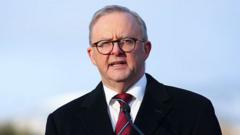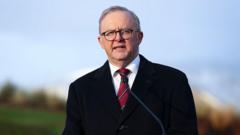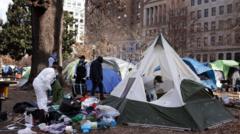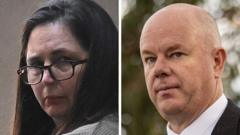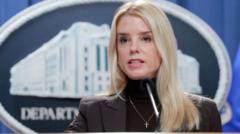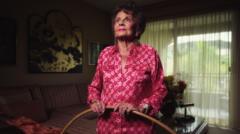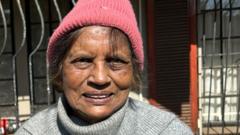With skyrocketing property prices, escalating rents, and inadequate social housing, many Australians find buying or renting unaffordable. As the Labor Party and the Liberal-National Coalition outline their plans to address the crisis, voters remain skeptical about their ability to restore homeownership dreams amidst ongoing cost-of-living concerns.
Australia's Housing Crisis Takes Center Stage Ahead of Election
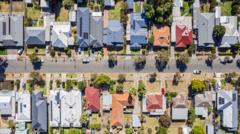
Australia's Housing Crisis Takes Center Stage Ahead of Election
As the federal election nears, the housing crisis in Australia becomes a crucial issue influencing voter sentiment.
The Australian housing landscape illustrates a severe imbalance driven by the rapid growth of urban populations and insufficient housing construction. This scarcity is worsened by restrictive planning regulations in key cities like Sydney and Melbourne, resulting in inflated home prices that have soared by 39.1% over the past five years. The average Sydney home now costs nearly A$1.2 million, while rents have surged, with weekly costs reaching A$773.
Public housing is dwindling, pushing many into homelessness, and the impact of climate change exacerbates the situation with increasing natural disasters. The influx of immigration and foreign buyers is often blamed for housing strain; however, experts assert their contributions are minimal.
Both major political parties have proposed strategies, with Labor committing to build 1.2 million homes by 2029 and the Coalition aiming for 500,000. Labor also plans to support first-time buyers with shared-equity loans. In contrast, the Coalition aims to cut migration and restrict foreign investments.
While these initiatives address housing issues, experts warn they are insufficient to resolve the housing crisis, raising concerns about long-term solutions. As the election approaches, the question remains whether either party can effectively tackle the pressing needs of Australian voters regarding affordable housing.
As the 2025 elections draw closer, the housing crisis in Australia captures public attention, presenting a challenge with far-reaching implications for the country's future.
Public housing is dwindling, pushing many into homelessness, and the impact of climate change exacerbates the situation with increasing natural disasters. The influx of immigration and foreign buyers is often blamed for housing strain; however, experts assert their contributions are minimal.
Both major political parties have proposed strategies, with Labor committing to build 1.2 million homes by 2029 and the Coalition aiming for 500,000. Labor also plans to support first-time buyers with shared-equity loans. In contrast, the Coalition aims to cut migration and restrict foreign investments.
While these initiatives address housing issues, experts warn they are insufficient to resolve the housing crisis, raising concerns about long-term solutions. As the election approaches, the question remains whether either party can effectively tackle the pressing needs of Australian voters regarding affordable housing.
As the 2025 elections draw closer, the housing crisis in Australia captures public attention, presenting a challenge with far-reaching implications for the country's future.



